A very tasty and no less useful berry is blueberries, known and loved by many gardeners, including Belarus. Spacidious and high garden blueberry shrubs attract the abundance of large sweet berries blue. Blueberries is attractive both in fresh and in recycled form. It makes delicious jams, useful compotes and fragrant wine. In addition to the nutritional value, the blueberry has long been recognized as a valuable drug culture. How to competently grow blueberries in Belarus to achieve the most large crops - read in this selection of material.
Blueberry, description and distribution of the plant
- For growing blueberries in Belarus, a view called "Tall Blueberry" is used. In the botanic, the plant is more often called the "Barley berry". This is a garden tall forest blueberry hybrid, derived by American scientists more than 50 years ago.
- Garden blueberries come from North America, the most northern continent of the Earth, with diverse (depending on the belt) climatic conditions. That is why this species is ideal for growing in Belarus, with its moderately continental climate and unstable weather in the autumn-winter period.
- In nature, blueberries can be found in the wetlands or in the forest more often.
- Blueberry tall or high is a leaf falling leaf of the heather family.
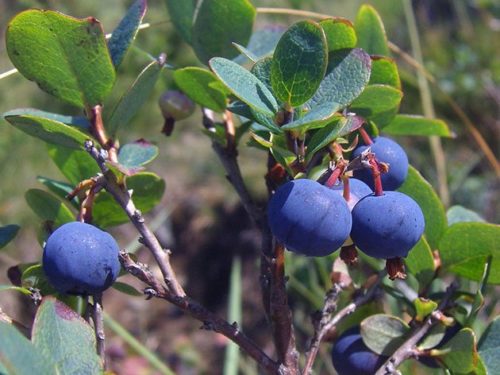
- A perennial tall plant, blueberries, with favorable conditions can reach height from 2 to 5 meters.
- The root shrub system is urine, well branched, lies at a depth of no more than 40 cm from the surface of the soil. Due to the lack of root hairs on the roots, the food occurs due to symbiosis with the mineralizing mushrooms. Underground shoots Shrub not "gives", the roots do not grow.
- The branches of many years of culture are strong and branched. Over time, old shoots are updated by younger.
- Blueberry leaves are simple, oval, glossy, dark green. Coloring foliage during the growing season varies: from juicy bright green in spring to saturated red, in the fall.
- Blueberry flowering occurs in the end of spring, usually in May month. Breakdi bell tower of prominent flowers gently pink colors are collected in inflorescence. As a rule, there are about 10 flowers in one infloretia. Plant insects pollinated.
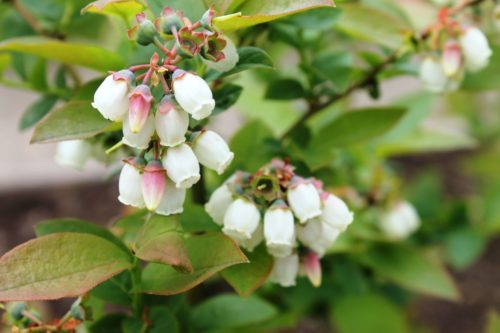
- Garden Blueberry Fruits - Juicy Blue Berries, with Characteristic Size Rap. On average, the diameter of one berry is 2-2.5 cm (in contrast to its small forest "relative"). Berries are collected in fruit brushes at 8-10 pieces, ripening uneven (in Belarus from July to September). The flesh in the medium density berries, white, contains small seeds. Effective blueberry varieties have a sour-sweet taste and a pleasant aroma.
- The kind of garden tall blueberry is characterized by high frost-resistant qualities, can grow in one place for about 30 years.
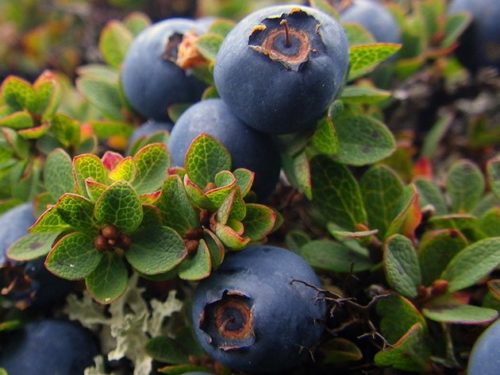
Blueberry, interesting facts
- Beautiful garden culture name (Berry Birth) has a lot of synonyms: Vaccinium shield (from the Latin name), blueberry blueberry, blueberry, blueberry, blueberry berry (according to accessories), American blueberry, Blueberry Canadian (by origin), Tree-like blueberry Blueberry tree (in appearance).
- No less interesting Russian prime names used by local residents for the forest species of shrub. Little blueberries are called water jacket, a cabbage, a blueberry, fool, foolish, fool, drunk berry, blue grapes, drunk. Such a negative designation of forest fruits is mistakenly associated with blueberries, supposedly after the use of which, the head begins to hurt. In fact, the unpleasant consequences of the body are associated with the unchanging forest blueberry companion - a polarie.
- Blueberry is often confused with blueberries. And indeed, these are plants of one kind, very similar to both externally and the taste qualities of fruits. Although, the cultural varieties of blueberries are characterized by a sweeter taste and do not pack hands when used, as it often happens with blueberries. This is explained by light blue born juice. In addition, unlike blueberries, blueberry stalks are brighter and always flames.
- Growing a tall blueberry in the garden, it is convenient to gradually collect a harvest, because the ripe berries are calmly hanging on the branches of almost 2 weeks. Blueberry yield is high enough. So, from one adult bush can be collected from 5 to 10 kg of blueberry berries.
- An important positive characteristics of garden blueberries are also good transportability and excellent forage of berries (up to a month in the refrigerator and until the week at room temperature).
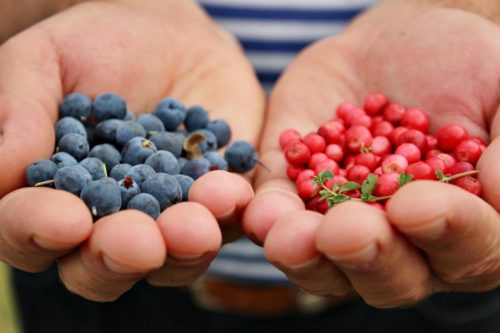
Blueberry, beneficial properties
- Garden blueberries are grown for its valuable edible berries. They are not only used in food as a sweet delicacy and vitamin product, berries have a confirmed drug action.
- The born of blueberries includes important organic acids, vitamins and phenolic compounds, increasing the strength of blood vessels, regulating the work of the internal secretion glands, participating in oxidative reaction reactions at the cell level.
- Blueberry fruits are rich in vitamins A, B1, B2, C, PP, such microelements, like iron, phosphorus. Blueberry consumption is shown to people suffering from vision problems, atherosclerosis, varicose veins, diseases of the gastrointestinal intestinal tract.
- Blueberry berries are anti-inflammatory, antioxidant, vasodilator, antitumor, choleretic and diuretic effects on the human body.
- Hypoallergenic blueberry berries tall are recognized as a useful dietary product and, due to the high content of sugars, are shown even diabetics.
- Blueberry berries are consumed in fresh and recycled (jam, compotes, wine).
- Studies of American scientists show the presence of blueberries in the berries of the so-called. "Elixir Youth", which prevents the aging processes.
- In addition to the nutritional value, the blueberry looks great on the plot as a decorative culture. Especially spectacularly looks like a tall shrub in the fall, when the foliage becomes red, and the berries die with matte blue shades.
- Blueberry leaves are also used to prepare some medicinal bravery and tinctures. In addition, the foliage of the plant is suitable for taking skin.
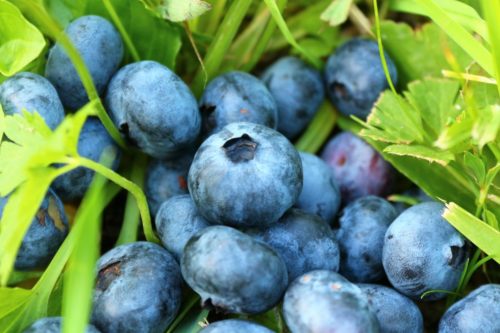
Blueberry: varieties in Belarus
Most cultural varieties of blueberry tall are at a height of 1 to 2.5 meters, have large delicious berries, characterized by high yields and differ in carelessness.
Not all foreign varieties of garden beds are suitable for cultivation in Belarus. Some varieties, for example, differ in the late period of fruiting and have time to grow only by 30-40%. Therefore, in Belarus, the early and secondary sorts of blueberries have proven themselves.
Consider the best grades of tall blueberries suitable for cultivation in Belarus.
Blueberries "Blocher" for Belarus
- One of the most valuable and common varieties in Belarus. Suitable for both private cultivation and for commercial purposes.
- The shrub grows in a height of no more than 2 meters, refers to the middle-rates. Middle Aging Timing: July-August.
- The clusters are long, large-scale berries, up to 2 cm in diameter. Fruits elastic, tasty, slightly flattened, blue.
- Fruits are used both in fresh form and in home blanks or for freezing.
- High-yielding grade, allows you to collect up to 9 kg from one adult bush.
- Blueberry Bluebird Fruits are not cracking, well transported and stored.
- The variety is resistant to droughts, frost and diseases. Shrub needs regular trimming.
Blueberry "Patriot" for Belarus
- A shrub of an elongated shape, with rectilinear shoots, grows in a height of 1 to 1.8 meters.
- Ripening of berries falls on July month. Fruits have a flattened form (diameter 15-19 mm) and differ in magnitude.
- Breaks with berries are dense. Fruits are characterized by high taste. The variety is suitable for use in the fresh form.
- Highly decorative frost-resistant grade, withstand temperatures up to -30 0C. Not allowed berries are distinguished by reddish.
Blueberry "Bloutha" for Belarus
- Blueberry variety, widely used in industrial production.
- Low (up to 1.2 m) shrub is distinguished by a wide squat crown.
- Berries begin to ripen early, from the beginning of July. Berry dimer - 13-15 mm.
- High and stable crops: 5-9 kg from shrub.
- The variety is distinguished by high taste. Fruits have a dense pulp, recommended for consumption in the fresh form.
- Blueberry Blueberry variety is characterized by high decorative qualities, endurance and frost resistance.
Blueberry "Elizabeth" for Belarus
- The variety is distinguished by an empty shrub shape, 1.6-1.8 m high.
- Strengthening shoots have a reddish color, fruit brushes loose.
- Blueberry berries of large sizes (2-2.2 cm), dense, are not deformed during transportation. The fruits are sweet, fragrant, covered with blue skin, are considered to be one of the most delicious among other blueberry varieties.
- The time of ripening is late (from the beginning of August), therefore there are risks of incomperation with early freezers.
- The variety is highly confused (up to -35 0C), prefers soil with a high peat content.
- The yield is average: 4-6 kg from shrub, ripening berries stretched for 2 weeks.
Blueberry "Northble" for Belarus
- The lowest variety reaching in a height of no more than 90 cm.
- Shrub powerful, shoots strong and elastic. It has high decorative qualities, used in landscape design.
- Ripening the berries later begins in August. Fruits of dark blue, large (1.8 cm in diameter).
- The yield is not high (2-2.5 kg from the bush), but stable. Berries are well stored, used fresh and for processing.
- Morious-resistant variety, withstand temperatures up to - 35 0WITH.
Blue Jint's blueberries for Belarus
- Sort of garden blueberries with very large berries resembling the size of the cherry. The diameter of the berry is up to 30 mm.
- The ripening of fruits is unlimited, gradual, for 3 weeks.
- Grade of high-yielding, middle aging timelines.
- The shrub is highly decorative: the autumn of the foliage acquires red, yellow and crimson-raspberry shades.
Blueberry "Duke" for Belarus
- American tall (up to 2 m) Blueberry variety, bred back in 1987.
- Refers to later flowering, although early aging grades (from the second half of July).
- High and stable yield. Berries are large (18-20 mm), do not mince over the years, delicious and fragrant. Skin in fruit reduced blue.
- Frost-resistant grade (up to -35 0C), requiring annual enhanced trimming.
- Does not make constantly wet and cold sites.
Blueberry "Sunrise" for Belarus
- Middle-life (up to 1.8 m) strawberry shrub with flattened dense berries.
- The future formation of the average pace, which does not require frequent trimming.
- Large berries (18-20 mm) are characterized by high taste, begin to ripen from mid-July.
- From shrub, you can collect about 4 kg of blueberry berries. It is recommended to use fresh.
- Morozhet resistance is average, may suffer from spring frosts.
Blueberry in Belarus, landing features
Successful Growing Golubika Garden in Belarus depends primarily from the correctly selected place for landing and directly the planting seedlings. How correctly the planting agricultural engineering will be performed, the plant is so raped and adapts to a new place.
For better pollination and fruiting, it is recommended to plant several blueberry varieties on the plot.
Place for landing blueberries in Belarus
- Blueberry - light and thermal-loving culture, therefore, the place for its landing should be chosen appropriate. The open sun is best suited, a well-warmed, plot, but protected from drafts and gusty winds. Shrub, landed in the shade, will not please sweet berries and high crops, fruit will be sour and scarce.
- Itifically affects the blueberry shrub, both a long gravity of moisture and a long period of drought. Therefore, it is not necessary to plant a perennial in lowlands or places of permanent flooding. The optimal option is smooth or slightly inclined area.
- Given the features of the root system of blueberries (the presence of mushrooms of minecorn), the plant needs an acidic medium, with an indicator of the pH of the soil 3.5-4.5. Such a level of acidity is the most favorable mushroom environment. Therefore, in soils with a high peat content, the shrub feels most comfortable. If the soil has an insufficient level of acidity, the leaves of blueberries begin to flicen, turn yellow, and the plant is poorly developed and "crack."
- If the soil on the site does not differ in high acidity - it must be acidified independently. To do this, peat (1: 1 from the ground) or sulfur (1: 1 with earth) or sulfur (5 kg dispel 5 kg 2). The depth of the peroxide should not exceed 40 cm - the level of lowering the roots of blueberries. The needles (or sawdust) also perfectly "whirls" the soil and creates favorable conditions for the development of mycorrhiza. In addition, this material improves the soil structure: facilitates it and provides a high level of aeration.
- Experienced gardeners are recommended before planting a shrub to shedding the planting a "acidic" water (for example, a solution of 9% acetic or malic acid in a ratio of 100 g per 1 liter of water).
- Blueberries favorably responds to light and drained soil (according to sand or sandy). Most often, peat-sand or peat-drifted substrates are used. The content of humus in mineral soils should be at least 3-3.5%.
- The moisture blueberry is well planted on a plot with a high level of groundwater. Otherwise, shrub with a surface root system (most susceptible) will require regular irrigation.
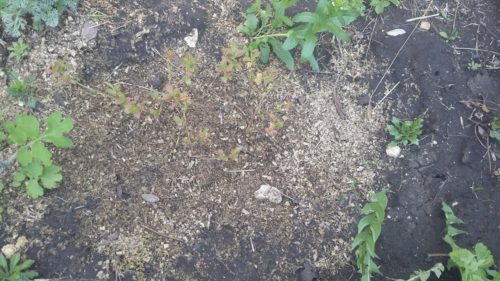
Agrotechnical landing of blueberries in Belarus
- For landing, blueberries are used, as a rule, 2-3-year-old seedlings.
- The landing of blueberry seedlings is more often carried out in spring. You can plant a plant in the soil and autumn, but there is a risk of frozen young plants in winter. Saplings with a closed root system (container type) are planted into open ground throughout the vegetative period. By the way, this is the best landing for blueberries, allowing to achieve almost 100% of the survival of seedlings.
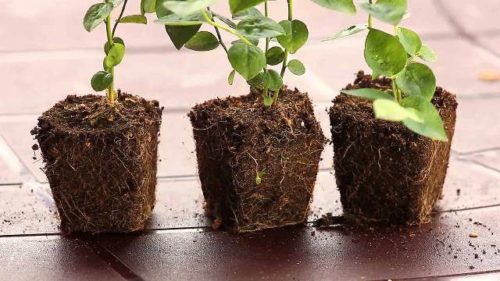
- When landing several bushes, blueberries are withstanding the interval between copies of at least 1.2-1.5 m, in a heaters - 2 times wider (about 2-3 m). If there are already fruit and berry cultures next to the estimated landing site, fruit-berry cultures are already growing, the distances from them from 3 to 5 meters should be held. This interval will avoid unwanted competition (for light, moisture, nutrients) between plants.
- Pre-landing preparation assumes the portion of the site and the removal of weeds. The average size of the landing pit is 50x50x50 cm. With a well-developed root system, you can slightly increase the width of the pit, up to 70 cm, for example.
- Experienced gardeners practice landing blueberry bushes into a limited volume of acidic peat, keeping the soil with a common level of acidity around the seedling. For this, the "limiters" is used with the corresponding composition of the substrate, which is bought into the ground where the seedlock is located directly.
- The traditional landing involves entering peat, sawdust, sand, sulfur (about 50 g) to the landing pit (about 50 g), which are stirred with the soil, are sealing and then planted seedlings. You can shed a yum with a solution of "acidic" water (as mentioned above).
- In the spring, it is recommended to add about 40 g of ammonium sulphate into the landing pit. Organic fertilizers to add to the ground is not worth it, as they lachers with the soil, and this is not desirable for blueberries.
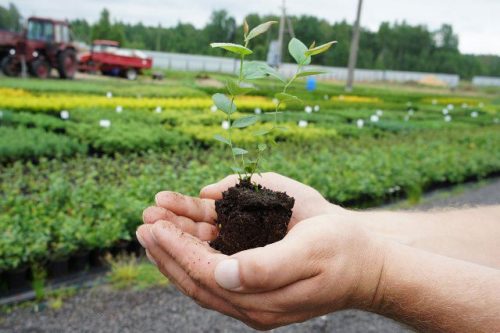
- When boarding the saplings of blueberries, it is important to accurately straighten the roots so that they can continue to grow in the soil and did not restrain the tight lore of the land of the container. Blueberry seedlock deepens to a pit for 5 cm deeper than it grew in a container, i.e. The root cerv should be underground.
- After planting, the area around the seedling is watered and mulched (for example, sawdust). The mulch layer should be at least 2-3 cm. The mulch retains the wet soil microclimate, does not allow the development of weeds and (in the case of use of conifers or sawdust of coniferous trees) additionally "acidifies" the soil.
Blueberry in Belarus, care
Blueberry is a relatively unpretentious culture, but still there are features and requirements for her care, without the knowledge of which the plant will not be able to grow and develop on "full force."
Important conditions for the successful development of shrub is regular watering, mulching, maintenance of soil acidity, feeding, trimming and shelter for the winter.
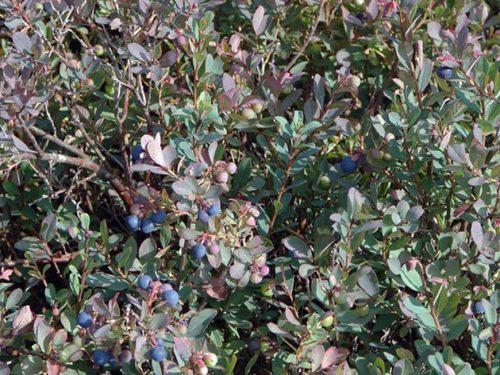
Watering and loosening blueberries in Belarus
- The moisture-loving plant, blueberries, needs regular irrigation, especially in the first few years after landing.
- The criterion of sufficient irrigation can be considered constantly moistened soil near the shrub. It is impossible to dry out the soil. On average, it turns out 2-3 irrigation per week. On one adult bush is spent about 10 liters of water.
- A beneficial effect on the perenniality has a monthly watering "acidified" water.
- Abundant and regular irrigation is especially important during the period of active vegetation: during flowering and fruiting (during this period, flowering kidney for the next year is also laid).
- With a long-term hot period, a full spraying of the blueberry bush can be performed.
- Economical and efficient is considered a drip way of watering blueberries.
- Watering is an important event for the successful development of the plant. At the same time, the stagnation of water or excessive oveurgement the shrub does not tolerate.
- Watering the plant follows in the morning or in the evening. It is convenient to use the usual garden watering can not bite the mulch.
- Swimming is an important agrotechnical technique that improves the aeration of the soil. The loosening of the priority circle is not carried out deeply (no more than 5 cm), given the surface running of the roots of the shrub.
- Mulching of the priority circle of coniferous sawdresses (or bark) - the best way to care for blueberry shrubs. The procedure is especially important in the fall, on the eve of winter to avoid the frozen plant.
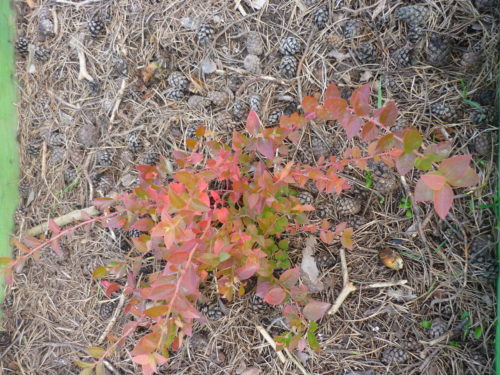
Making fertilizers and feeding blueberries in Belarus
- Tall garden blueberries needed additional feeding and making fertilizers.
- Mineral fertilizers are preferred for blueberries, more nitrogen-containing (ammonium sulfate, ammonium nitrate), in smaller doses - phosphoric (superphosphate) and potash (potassium sulfate). Potassium chloride is contraindicated for blueberries. In addition, as already noted earlier, the organizing agent does not fit the plant, as it leads to the "latching" of the soil.
- The average dosage of mineral feeding is 70-90 g per adult blueberry bush. Fertilizers can be made both in liquid (with watering) and in dry form (with sealing to the ground no more than 5 cm). Fertilizers can be mixed and deposited.

- The lack of nitrogen causes the yellowing of foliage, a decrease in the size of the berries and the slowdown in the growth of shoots. Nitrogen is introduced in stages: early spring (during the dissolution of the kidneys), in May (during flowering) and at the beginning of the summer (when the formation of the uncellies and the development of fruits). Excess nitrogen is also not desirable: this leads to the active growth of escapes, as a result of which they do not have time to wave and frozen in winter.
- Phosphoric and potash fertilizers are added twice a year: early spring (to the active period of vegetation) and in summer (during the active phase of the plant development). With a lack of phosphorus, the leaves become pink shade and pressed to the shoots. The shortage of potassium leads to the elimination of the top of the sheet plate and the appearance of spots on it.
- Once a year it is recommended to introduce magnesium-containing (magnesium sulfate) and zinc-containing (zinc sulfate) fertilizer.
- If the leaves of blueberries are noticeably deformed, with their edges turn yellow - the plant lacks calcium.
- The leaves with a red tint, on which green color remains near the central vein, indicate a lack of a shrub of such an element like magnesium.
- The lack of boron in the plant provokes the change in the color of the leaves on the blue color, the yellowing of the sheet between the veins and the escape of the shoots.
- When the grid of green veins is formed against the background of the yellow color of the entire sheet - it's about a lack of iron.
- White shade of a sheet plate indicates a lack of sulfur plant.
Fighting diseases and pests of blueberries in Belarus
- Blueberry is practically not amazed by diseases and pests.
- In the event of not compliance with the rules of plant care (violation of the irrigation rate), it is possible to defeat the bush with fungal diseases. So, the blueberries occasionally can be amazed with gray rot, the monolion of fruits, septoriasis, spotting. As prophylaxis, the plant is treated with burglar liquid, and to combat diseases - foundazole or topsin.
- From pests, most often ripe blueberry berries "suffer" from birds, May beetles, leaflerting, threes and crap. In this case, large insects are collected by hand, small - spray with chemicals (for example, carbofos). Processing of plants insecticidal preparations are carried out in spring and autumn, providing a prophylactic measure of pest protection.
Cutting Blueberries in Belarus
- Pruning not only stimulates the growth of plants and an increase in the number of floral kidney laid, but also contributes to the rejuvenation of the shrub, an increase in yield, the enlargement of blueberry berries. In addition, after trimming a bush, blueberries blooms much earlier, and in winter it is less damaged.
- The trimming of shrubs begin with a 3-4-year-old age of plants for the formation of a "skeleton" of the plant.
- Blueberry trimming is carried out every year, early spring (to swelling kidney) or in the fall (after falling leaves).
- The key rule trimming the blueberry bush is the replacement of old shoots on young. Blueberries fruits on shoots (growths) of the previous year.
- Sanitary trim involves removing dry, old and damaged branches. Then cut the tops of shoots that do not give good growth, as well as thin, thickening mid-shrub, shoots. As a result, there should be 3-5 "leading" annual shoots that depart from the base of the shrub.
- After 15-20 years of age, the stronger rejuvenating trimming of the blueberry bush is carried out.
- The forming pruning is to form several skeletal shoots, giving the branch of the correct shape of the crown and removing weak or uncomfortable branches.
- The degree of pruning depends on the variety of blueberries and the growth intensity of shoots. Intensive future formation will require, respectively, stronger trimming.
Blueberry shelter in Belarus
- Most blueberry varieties grown in Belarus are pretty frost-resistant varieties (withstanding up to -25 0C), which do not require additional shelter in winter.
- Even a slightly frozen running of blueberries in the spring quickly restore and are actively fruit.
- The risk of dynaming blueberry shrubs is higher in hopping winter with sharp fluctuations in temperature.
- On the winter it is recommended to strengthen only young blueberry seedlings or late-leaf shrubs. A nonwoven material or burlap can be used as a covering material.
- In the spring shelter is removed and conducting pruning, including the pussy of blueberry shoots.
- Blueberry flowers are not afraid of spring frosts, withsting temperatures up to -7 0WITH.
Blueberry harvesting in Belarus
- The terms of harvesting depends on the variety of blueberries and climatic conditions. So, for example, early and middle-timed blueberry varieties begin to be fron in July.
- Thanks to uneven maturation, the collection of berries stretches in time, usually for 2-3 weeks.
- A sign of ripening berries is the color of fruits, changing with green on a blue-blue. After changing the color of the peel, the berries must be signed on the branches for a few more days, - so they will become sweeter and tastier.
- Ripe blueberry berries are easily separated from the brush. The fruits of the first and second collection are the largest, so they are better consuming in a fresh form. Subsequent fees are minced and more appropriate to be recycled.
- Whole overwhelmed blueberry fruit can be stored in a refrigeration chamber with a temperature of 0 to +2 0With about two weeks.
- Freeze washed and dried berries in the freezer. You can also dry blueberry berries and use them for cooking compotes or infusions.
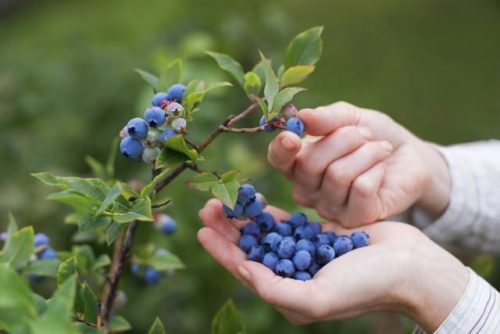
Blueberry breeding in Belarus
Garden dummy breeds, as a rule, in a vegetative way: cuttings and decodes. The seed method of reproduction is a longer and time-consuming process that does not preserve the varietal signs of the plant.
- To grow blueberries from seeds, select the largest and healthy berries of blueberries. The collected seeds are slightly dried and in the fall seed into bed with "sour" soil (with the addition of peat). Spring sowing implies preliminary stratification of seeds within 3 months. Seeds in the soil close a shallow, up to 1 cm, sprinkled with a mixture of sand with peat. Constantly moisturizing landing, a year later, seedlings feed the nitrogen-containing fertilizer. After 2 years, the blueberry seedlings will be ready for a transplant to a permanent place.
- For reproduction of blueberries most often uses the alerts of perennial. The cuttings are harvested in autumn or early in spring, cutting shoots with a length of 15-20 cm. During the month, the cuttings are stored in a cold room (with a temperature of + 1-5 0C), after which it is planted in the soil-peat substrate. Set cuttings into the container obliquely. After 2 years, with competent caring for cuttings (watering, loosening, heat, ventilation), the full blueberry seedlings are obtained, which are planted for a permanent place.
- You can also breed blueberries with a bush melting. For this purpose, the lower branches of the plant bend to the ground, they pin it with a metal bracket and sprinkled with soil. For better root formation, the tanks are closed with a film. In the spring, subject to the formation of well-developed roots, the drains are separated from the maternal shrub and planted at a permanent place.
One of the most simple and affordable ways to have a useful berry on its site is to purchase a ready-made planting material. Buy blueberry saplings in Belarus can be in special garden shops, in botanical nurseries or online stores. 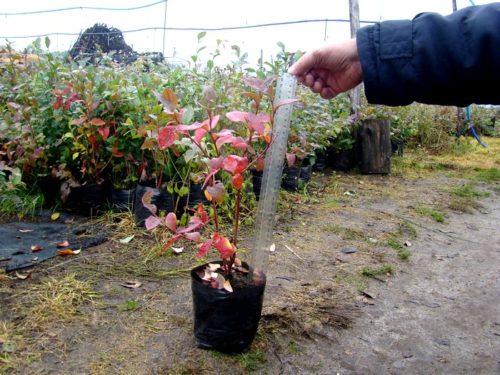
Thus, grow blueberries in Belarus quite simply. The main thing is to provide a plant as the soil as the soil and high-quality regular care. Rich yields of delicious and useful berries will become a real "reward" for all the works and care.

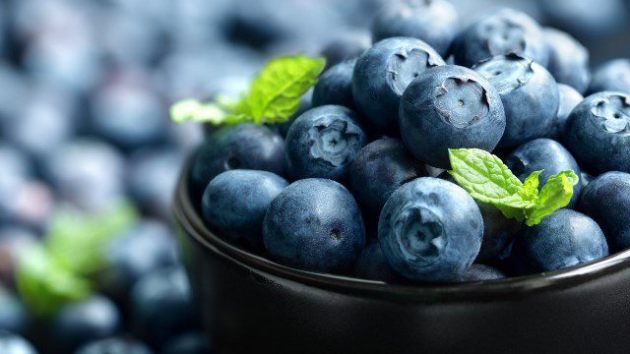
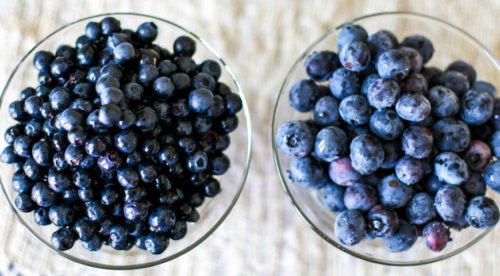
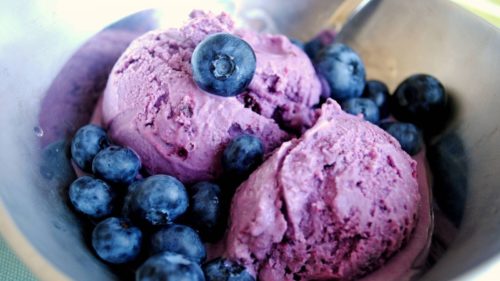
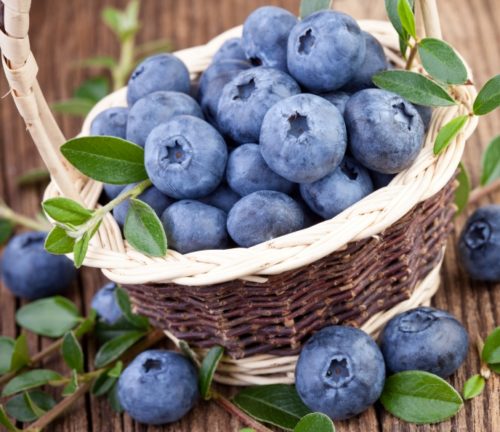
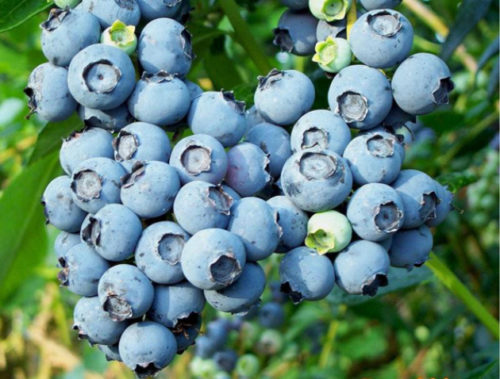
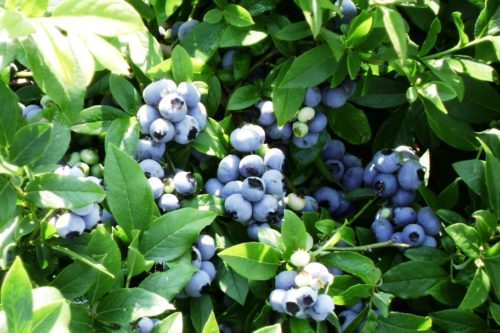
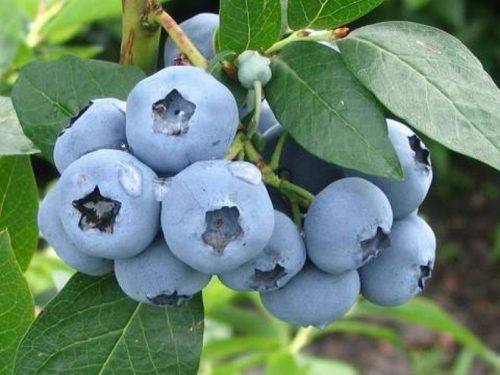

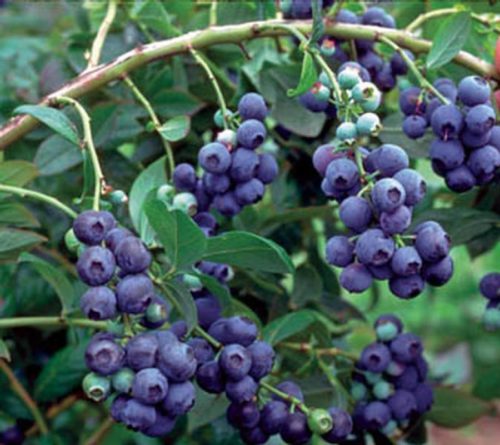
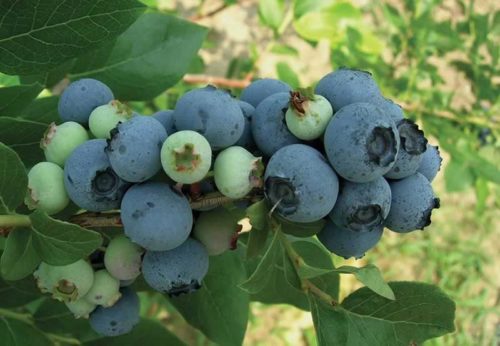
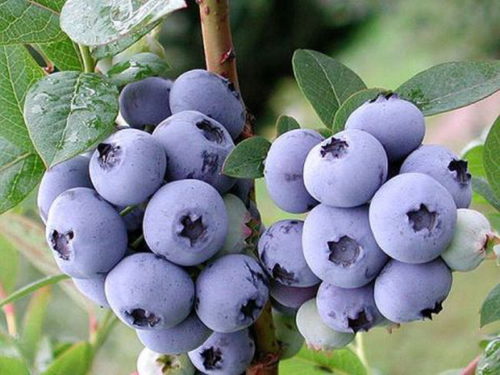
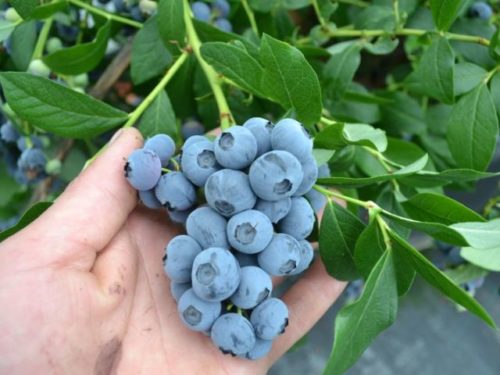
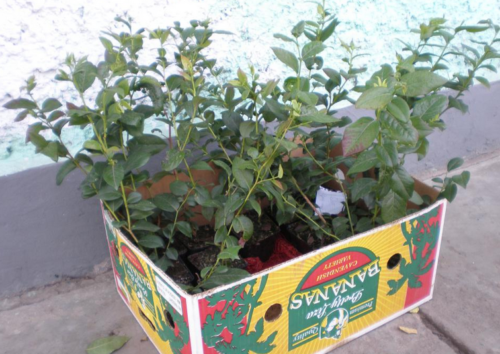
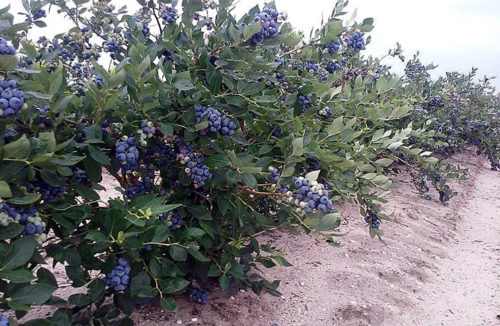
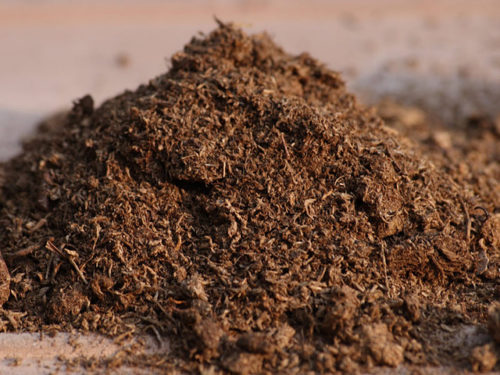
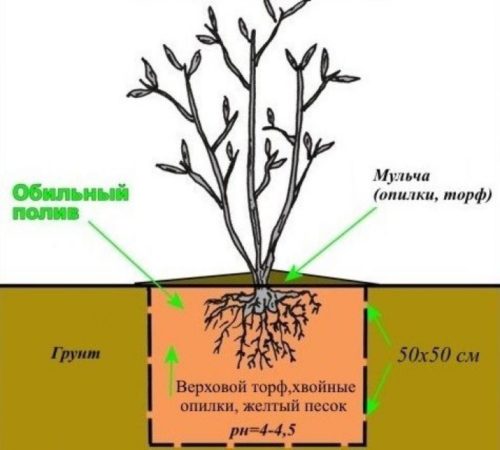

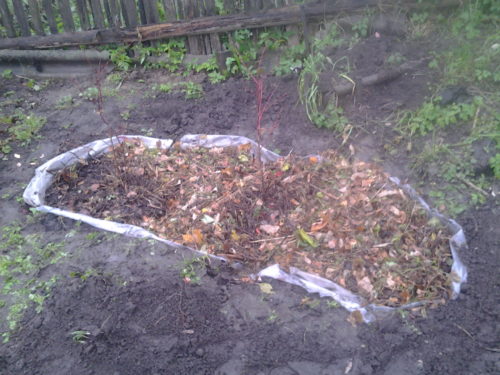
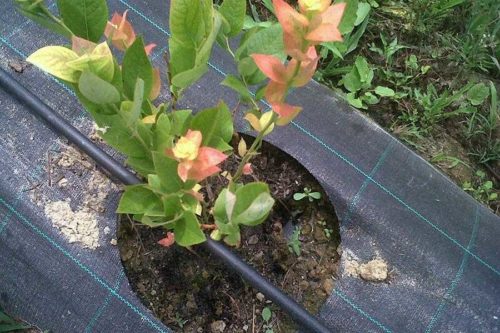
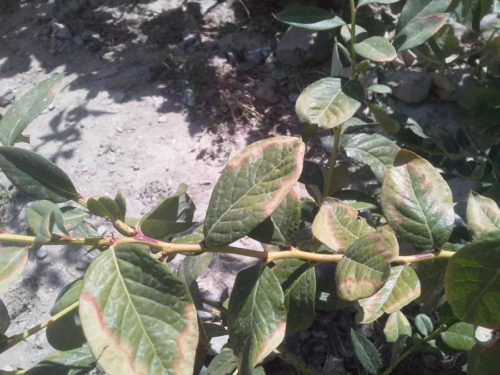
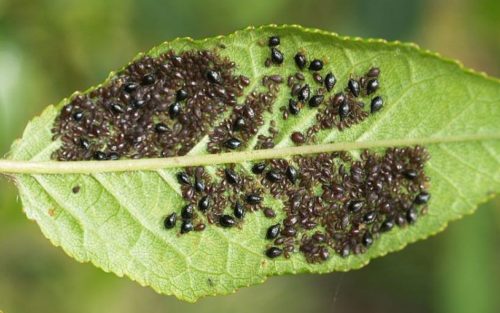

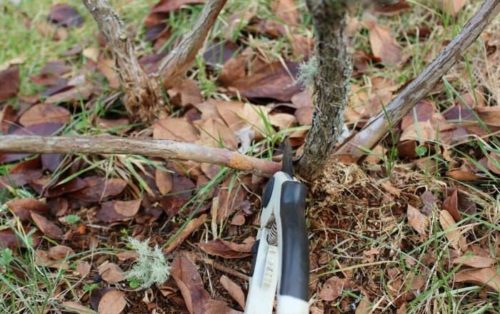

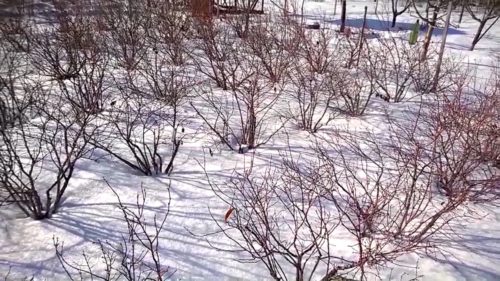
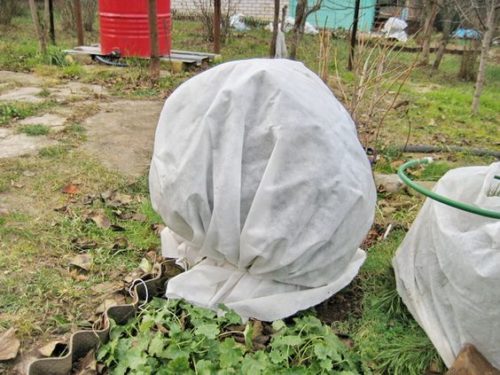
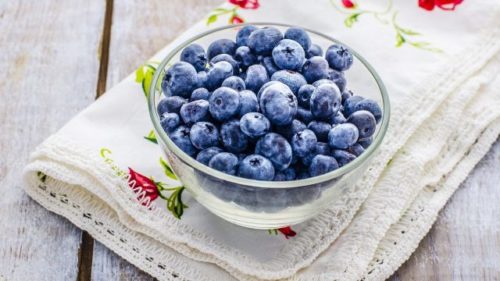
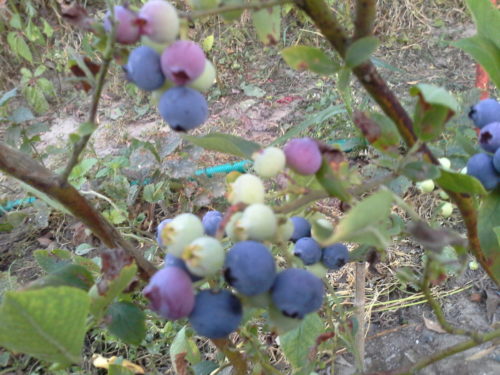

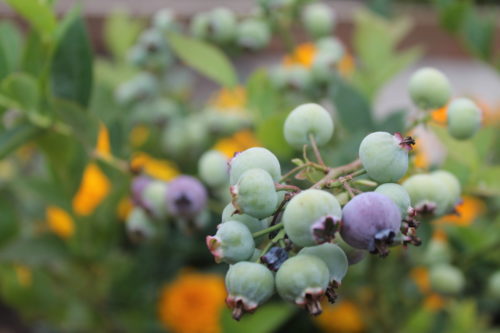
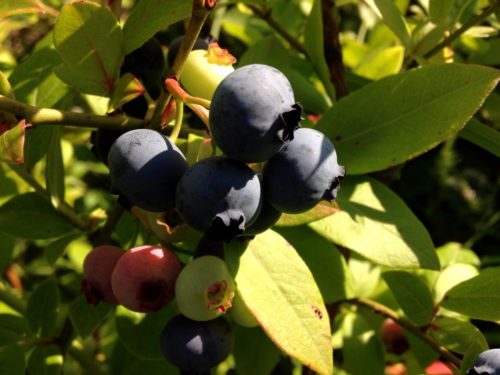
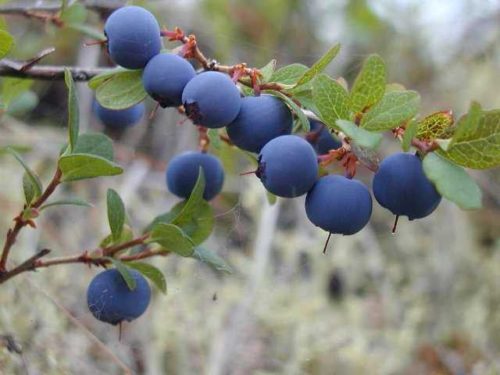
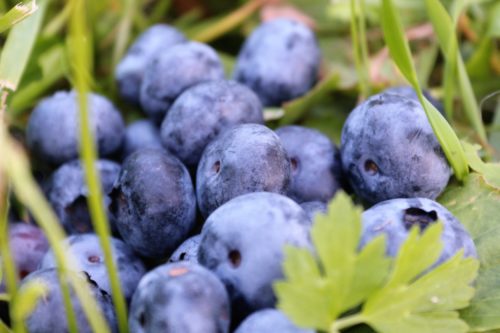
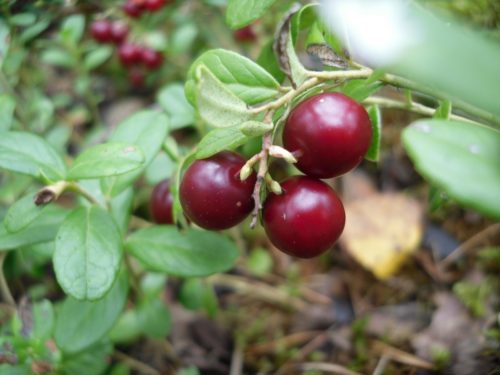
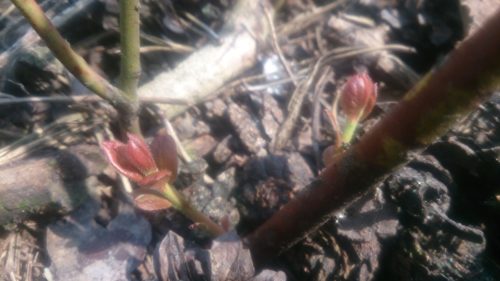
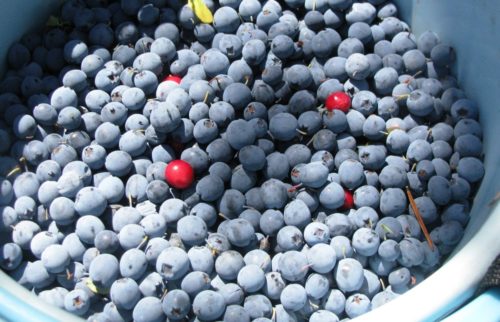
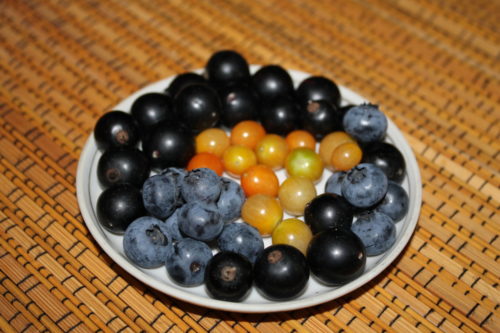
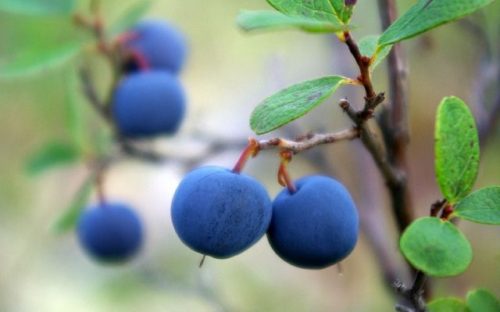
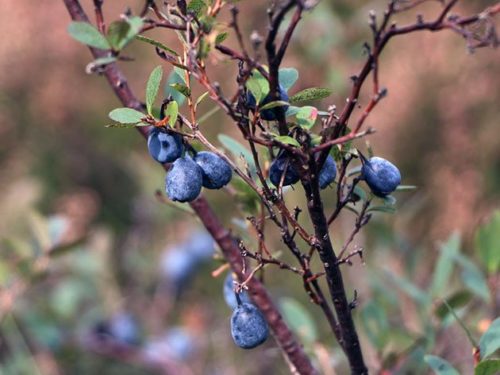
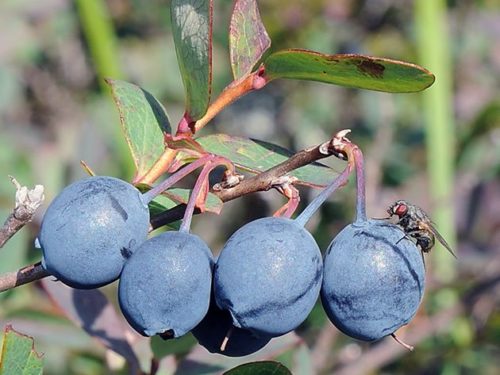
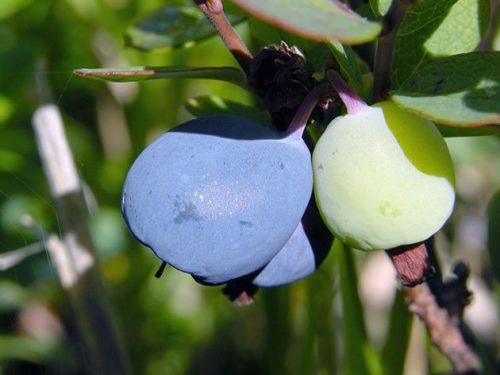
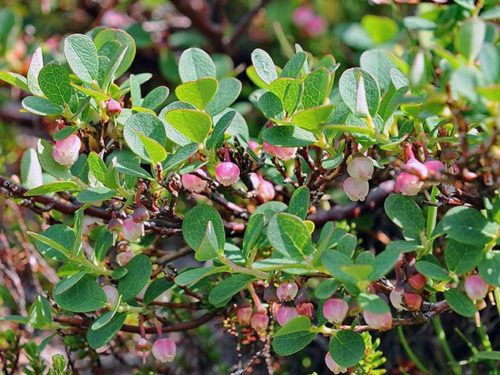
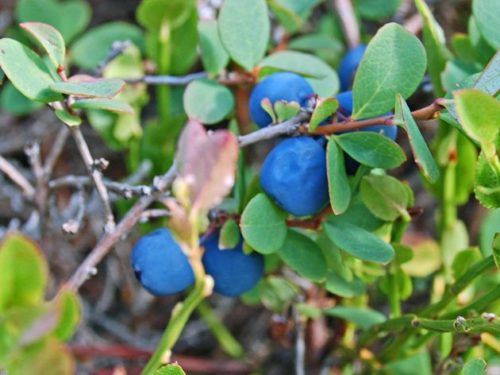
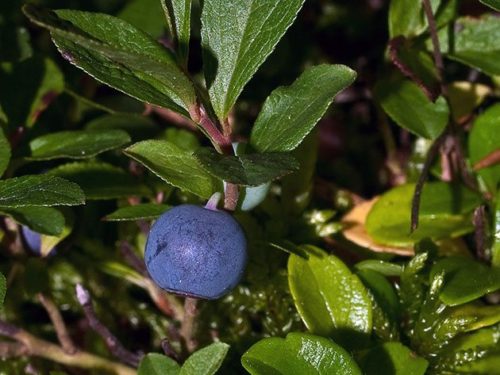
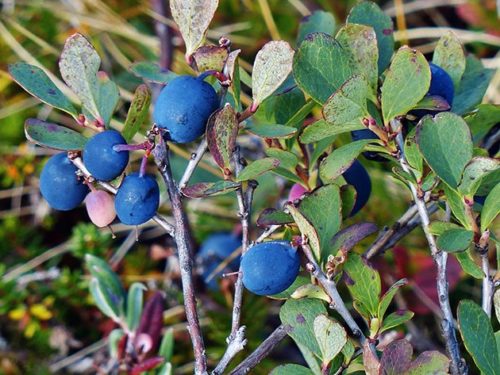
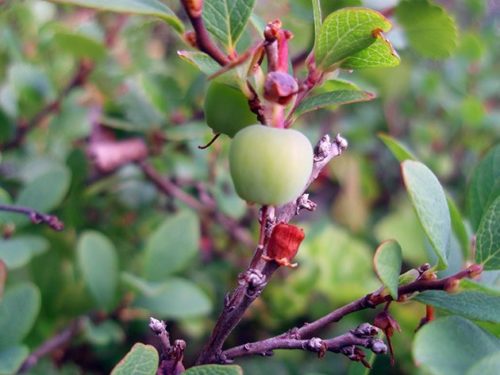
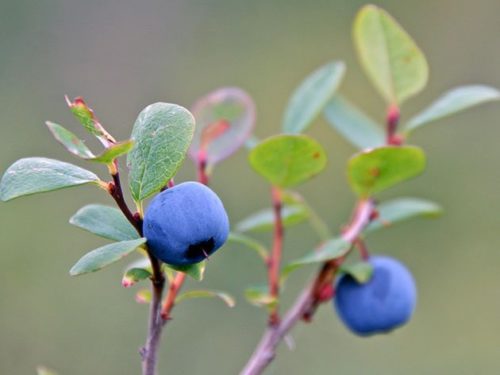
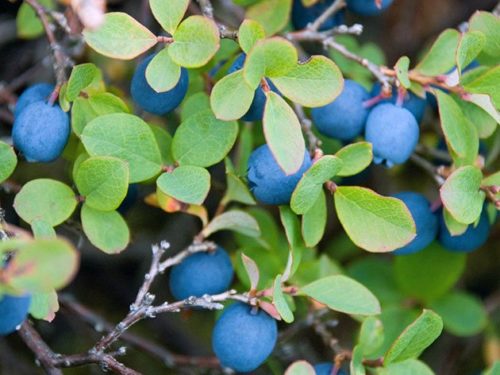
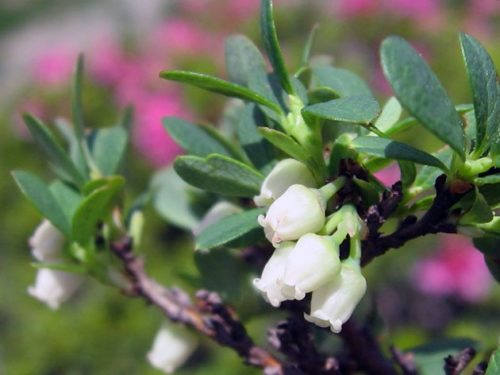
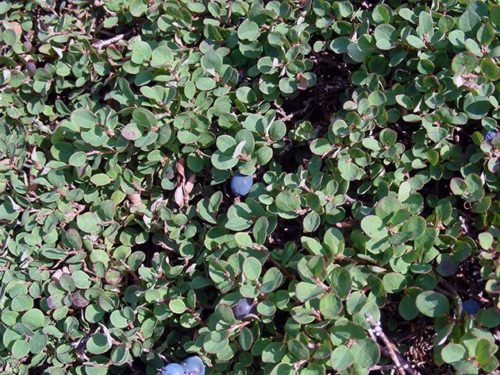
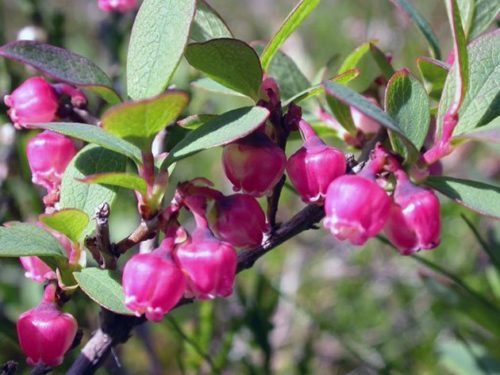
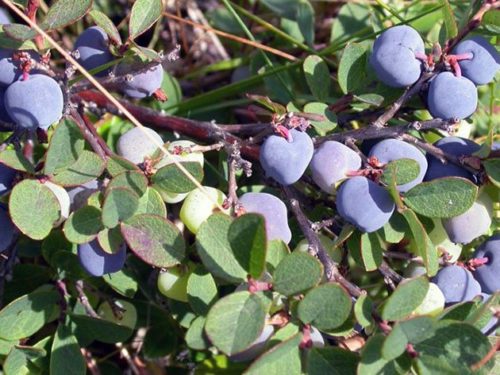
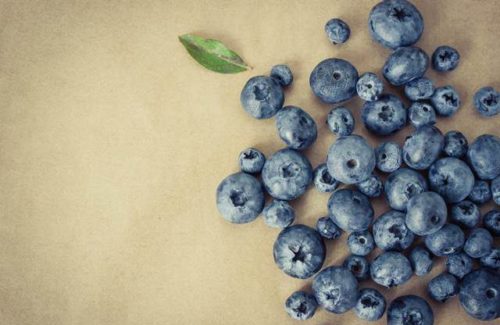
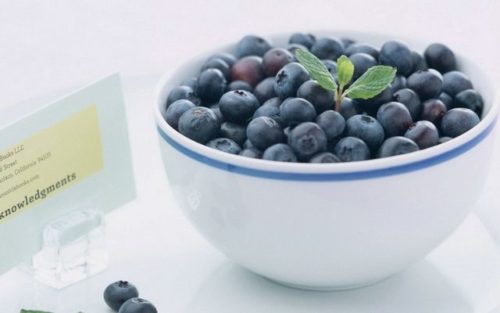
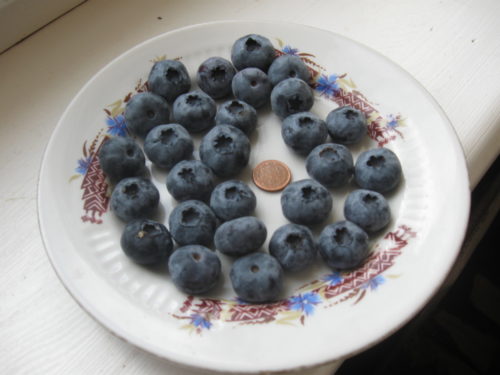
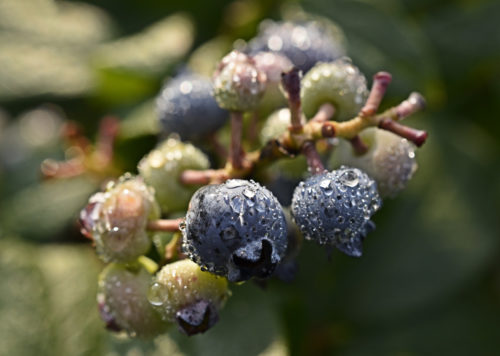
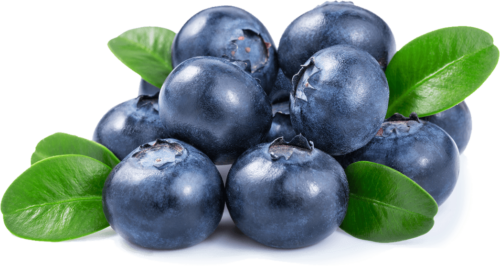












 Start a discussion ...
Start a discussion ...